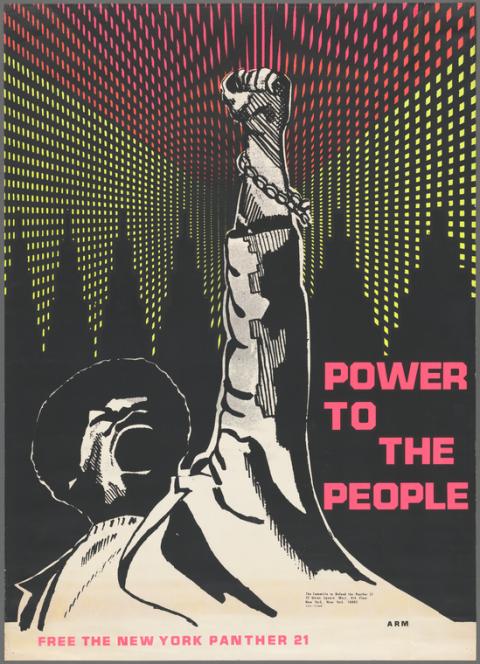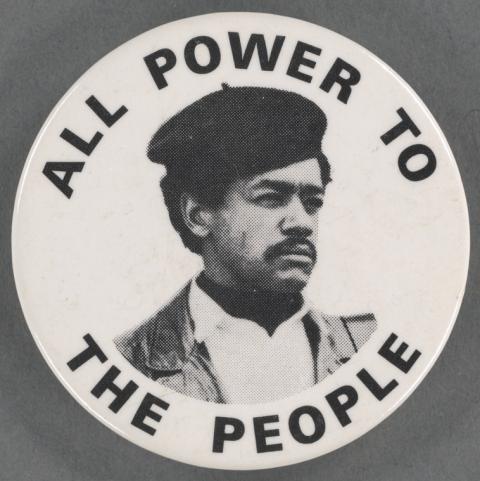Power in Print explores the art of the Black Power movement poster, showcasing a variety of aesthetics, styles, and messaging strategies. This collection-based exhibition pulls together dozens of posters from the Schomburg Center’s Art and Artifacts Division. The display also includes a selection of iconic imagery by artist, designer, and former Minister of Culture of the Black Panther Party, Emory Douglas. Both at the time and in our historical memory, Douglas’s designs came to visually communicate the ideals of Black Power and the political stances of the Black Panther Party.
Posters were the social media and digital design of the 1960s and 1970s—a way to mass-produce messaging through images and text and share information widely. Some posters were created by savvy graphic designers with keen attention to font, color, aesthetics, and layout. Others were made strictly to communicate vital news. While all of the collection items are originals, none are unique pieces of art or material culture. Multiple copies of each poster were produced, but since they were primarily utilitarian objects, the majority were disposed of soon after. The Black Power movement, along with adjacent and intersecting efforts to stop the war in Vietnam and secure rights for workers, women, and other oppressed people, marked a significant moment in the history of graphic design in the United States. These movements utilized the form to express issues of urgency and transform consciousness into action.
This exhibition contains materials promoting arts and cultural events, notices of rallies and political organizing, and visually striking statements asserting Black Power. Together, they highlight cultural pride, the arts as an organizing tool, gender roles, the black family, and schools and universities as sites for developing black consciousness. Posters were also used to galvanize the masses to support actions to free political prisoners, gain political and social representation, and align with freedom-fighters internationally. Other posters focused on key figures including Malcolm X, Angela Davis, and Marcus Garvey. The majority of the collection items were produced in New York City, with some from the wider Northeast, Washington D.C., and abroad. It also includes a selection of posters from after the movement that speak to the legacy of Black Power that rippled through the late 1970s, 1980s, and 1990s.
Power in Print is co-curated by Dr. Sylviane A. Diouf and Isissa Komada-John. It is presented as part of the Schomburg Center’s Black Power 50 initiative, an exploration of Black Power through public programs, youth events, a publication, and exhibitions.



